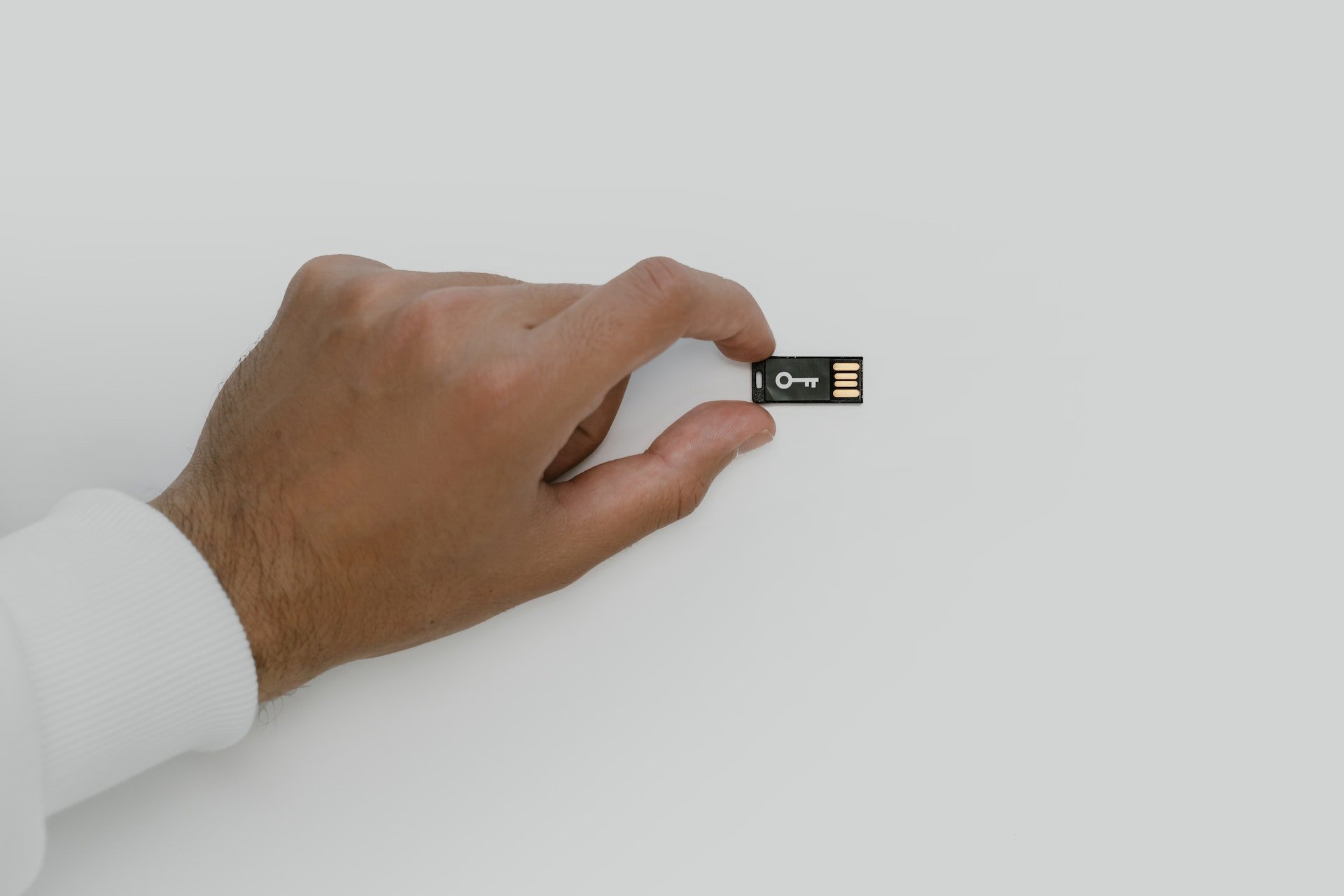Table of Contents
Introduction Regulatory Landscape and Privacy Engineering The Secure-by-Design Model Explained Digital Trust Technologies: Building a Secure Digital Future Converged Identity Solutions: Navigating the Fluidity of Modern Roles Why CyberOxide is the Premier Choice for IT, Cybersecurity Consulting, and Managed ServicesIntroduction
In the modern era, where the digital environment is undergoing rapid transformations, the importance of cybersecurity cannot be overstated.
Businesses are increasingly leaning on DevOps teams to seamlessly integrate and deploy software, making the security of their systems, networks, and programs more critical than ever.
This article aims to explore the significance of cybersecurity within the DevOps context. It underscores DevOps teams' challenges in maintaining security amidst continuous integration and deployment processes.
Moreover, it highlights the potential benefits of partnering with a cybersecurity consulting and managed service provider. Such a partnership ensures robust security measures and provides guidance and expertise, making them a valuable ally in effectively navigating the complex landscape of cybersecurity.
DevOps teams prioritise cybersecurity in the digital era, and partnering with experts ensures robust protection amidst rapid software deployments.
Regulatory Landscape and Privacy Engineering
With data breaches making headlines and stringent regulations coming into play, privacy engineering has become the need of the hour. Regulations like Europe's NIS2 Directive and the U.S. state data privacy laws emphasise the importance of automated controls and privacy compliance measures.
In Australia, the Australian Privacy Principles (APPs) serve as the cornerstone of the privacy protection framework under the Privacy Act 1988. These principles apply to any organisation or agency covered by the Privacy Act. There are 13 Australian Privacy Principles that govern standards, rights, and obligations related to:
-
The collection, use, and disclosure of personal information.
-
An organisation or agency's governance and accountability. Integrity and correction of personal information.
-
The rights of individuals to access their personal information.
The APPs are principles-based, allowing organisations and agencies the flexibility to tailor their personal information handling practices to their business models and the diverse needs of individuals. They are also technology-neutral, ensuring adaptability to changing technologies.
A breach of an Australian Privacy Principle can lead to regulatory action and penalties. For DevOps teams, this means staying updated with the latest regulations, not just from Europe and the U.S. but also from Australia, ensuring that the software they develop complies with these standards. Understanding and integrating these principles into the development process is crucial to ensure privacy compliance and safeguard user data.
Amid rising data breaches, global and Australian regulations emphasise privacy engineering, urging DevOps to prioritise compliance and safeguard user data.
The Secure-by-Design Model Explained
In the past, security protocols and measures were often bolted on as an additional layer after a product or system was already developed. This reactive approach frequently led to vulnerabilities and security gaps that malicious actors could exploit. However, the landscape of software development and system design has evolved, giving rise to the secure-by-design model.
The secure-by-design model is a proactive approach emphasising the importance of integrating security measures from a product or system's conceptualisation and design phase. Instead of treating security as a secondary concern, it becomes an integral part of the development process. This ensures that every component, module, and functionality is designed with security.
By adopting this model, developers can identify potential vulnerabilities early in the development cycle. This early detection allows for immediate rectification, reducing the risk of security breaches and ensuring a more robust and secure end product. Real-time identification and mitigation of threats mean the final product is fast, reliable, and trustworthy.
Some key benefits of the secure-by-design model include:
-
Reduced Risk: By identifying vulnerabilities early, the final product has a lower chance of security breaches.
-
Cost-Efficiency: Addressing security concerns during the development phase is often more cost-effective than fixing issues post-deployment.
-
Enhanced Trust: Products developed using this model are more likely to gain users' trust, as they are assured of its security.
-
Regulatory Compliance: Many industries have strict security regulations. Designing with security in mind ensures compliance from the outset.
The secure-by-design model represents a paradigm shift in approaching security in the development process. It underscores the idea that security is not just a feature but a foundational element ensuring a product or system's integrity, reliability, and success.
The secure-by-design model proactively integrates security during development, reducing risks, ensuring cost-efficiency, enhancing trust, and guaranteeing regulatory compliance.
Digital Trust Technologies: Building a Secure Digital Future
In the digital age, where interactions are increasingly moving online, trust plays a pivotal role in ensuring these interactions are secure, reliable, and meaningful. Digital trust technologies have emerged as the backbone of this trust, providing the tools and frameworks needed to foster confidence in digital platforms and services.
1. Trust Architecture
Trust architecture refers to the underlying structure and design principles that ensure the security and reliability of digital systems. It encompasses the protocols, standards, and guidelines that dictate how data is stored, transmitted, and accessed. A robust trust architecture ensures that digital platforms resist breaches, hacks, and other malicious activities, instilling user confidence.
2. Digital Identity
Digital identity is a digital representation of an individual's personal attributes, including their name, date of birth, biometric data, and more. It serves as a unique identifier in the digital realm, allowing for secure authentication and authorisation. With the rise of blockchain and other decentralised technologies, digital identities are becoming more secure and tamper-proof, ensuring users can interact online without fear of identity theft or fraud.
3. Explainable AI (XAI)
As artificial intelligence (AI) systems become more complex, there's a growing need for transparency in how these systems make decisions. Explainable AI aims to make AI decision-making processes more understandable to humans. By providing insights into how AI algorithms work, XAI fosters trust among users, ensuring that they can rely on AI-driven systems without apprehension.
Liz Grennan from Stamford, a renowned expert in the field, has emphasised the importance of these digital trust technologies. According to Grennan, in an era where data breaches and cyber threats are rampant, these technologies are not just tools but essential components in building a secure digital ecosystem. They enhance user trust and uphold the principles of data protection and digital dignity, ensuring that users' rights and privacy are always at the forefront.
Digital trust technologies are shaping the future of digital interactions. By integrating trust architecture, digital identity, and explainable AI, businesses can offer users a seamless and secure experience, reinforcing the belief that the digital world can be as trustworthy as the physical one.
Digital trust technologies, encompassing trust architecture, digital identity, and explainable AI, fortify online interactions, ensuring user confidence, data protection, and upholding digital dignity.
Converged Identity Solutions: Navigating the Fluidity of Modern Roles
In today's dynamic digital landscape, the lines between different roles are becoming increasingly blurred. Individuals often wear multiple hats, transitioning seamlessly between being an employee, a business partner, a customer, or even a combination of these. While offering flexibility, this fluidity also presents challenges in managing and securing digital identities. Enter converged identity solutions.
What are Converged Identity Solutions? Converged identity solutions are advanced platforms designed to integrate and manage various dimensions of an individual's identity. Instead of having separate systems for each role, these solutions provide a unified platform where all aspects of an individual's identity are consolidated. This convergence ensures that regardless of the role one assumes, their digital identity remains consistent, secure, and easily manageable.
Significance in a Dynamic World: As roles evolve and the boundaries between them become less distinct, there's a pressing need for solutions that can adapt to these changes. Converged identity solutions recognise the multifaceted nature of modern identities and offer the flexibility required to navigate this complexity. They ensure that their digital interactions remain uninterrupted and secure as individuals transition between roles.
Benefits of Converged Identity Solutions:
-
Seamless Integration: These solutions integrate various identity dimensions, eliminating the need for multiple systems and ensuring a cohesive user experience.
-
Enhanced Security: By centralising identity management, converged solutions offer robust security features, reducing the risk of breaches and unauthorised access.
-
Consistency: Regardless of the role an individual assumes, their identity remains consistent, ensuring that their preferences, settings, and data are always accessible.
-
Cost-Efficiency: With a single platform managing all identity dimensions, businesses can reduce costs associated with maintaining multiple systems.
-
Adaptability: Converged identity solutions are designed to adapt to the ever-changing digital landscape, ensuring they remain relevant and practical.
Converged identity solutions are not just a technological advancement but a response to the evolving nature of roles in the modern world. By offering a unified platform that integrates various aspects of identity, these solutions ensure that individuals, whether employees, business partners, or customers, experience continuity and security in all their digital interactions.
Converged identity solutions unify multiple roles, ensuring consistent, secure digital interactions adapting to the evolving digital landscape and modern role fluidity.
Why CyberOxide is the Premier Choice for IT, Cybersecurity Consulting, and Managed Services
In IT and cybersecurity, the right partner can distinguish between a secure and vulnerable digital environment. Here's why CyberOxide stands out as the go-to choice:
1. Holistic Understanding of DevOps Dynamics
DevOps teams operate in a unique environment, balancing rapid development with operational stability. CyberOxide recognises the distinct challenges this presents, from continuous integration hurdles to deployment intricacies. Our deep understanding ensures that we're not just addressing surface-level issues but tuned into DevOps operations' nuances.
2. A Team Defined by Excellence
CyberOxide boasts a team of seasoned IT and cybersecurity specialists. Their expertise spans various domains, ensuring that every IT-related or security-specific challenge is addressed with the highest level of proficiency.
3. Customization at its Core
CyberOxide believes in a tailored approach. We understand that every DevOps team has its own set of tools, practices, and workflows. Our solutions are designed to align with these practices, ensuring seamless integration and minimal disruption.
4. Comprehensive IT and Cybersecurity Services
Beyond cybersecurity, CyberOxide offers a range of IT services, ensuring that your digital infrastructure is robust, efficient, and up-to-date. From IT consulting infrastructure setup and managed services, our comprehensive offerings cater to all your digital needs.
5. Unwavering Commitment to Security
In today's digital age, security breaches can have catastrophic consequences. CyberOxide's primary mission is to safeguard your digital assets. Our proactive approach ensures that threats are identified and mitigated before they can cause harm.
6. Guiding You Through the Cyber Maze
The world of cybersecurity is vast and ever-evolving. With new threats, technologies, and regulations emerging regularly, it can be overwhelming to stay updated. CyberOxide guides you, ensuring you're always informed, protected, and compliant.
7. Beyond Security - A Partner in Growth
At CyberOxide, we see ourselves as something other than just a service provider. We are your partners in growth, ensuring that as your business evolves, your digital environment remains secure, efficient, and in line with your objectives.
CyberOxide offers more than just services; we offer peace of mind. Our holistic approach to IT and cybersecurity and our commitment to excellence ensure that your digital assets are always in safe hands.
CyberOxide offers tailored IT and cybersecurity solutions, understanding DevOps challenges, ensuring digital asset protection, and partnering for growth with comprehensive services.
Resources
- insurancebusinessmag.com - Regulators will prosecute more firms for cyber security
- pwc.com.au - 2023 Privacy Act Review Report | Cybersecurity
- eftsure.com - Cyber Insurance Trends for 2023
- lexisnexis.com.au - top 10 privacy and cyber issues and trends for 2022
- pwc.com.au - Stepping up: 2023-2030 Australian cyber security strategy
- bellrock.com.au - July 2023 Market Update – Cyber Liability
- aoninsights.com.au - Cyber Insurance Market Insights, H1 2023
- homeaffairs.gov.au - 2023-2030 Australian Cyber Security Strategy Discussion Paper
- marsh.com - Australian Mid-Year Insurance Market Update 2023
- deloitte.com - Deloitte Australian Privacy Index 2023 - Risk Advisory
.jpg)




